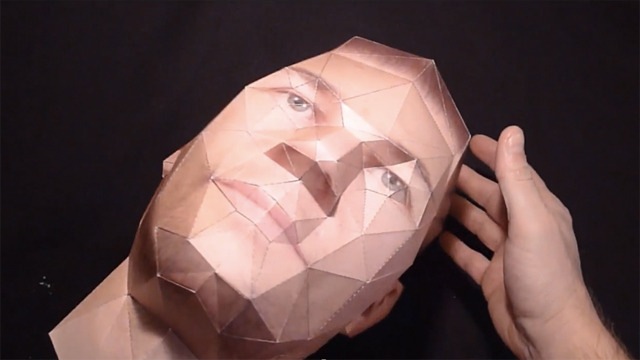![]()
In 2001, Rockstar Games changed the very nature of gaming with a release called Grand Theft Auto III. A sequel to a free-roaming cult hit, GTA was one of the first major blockbusters in a new era of gaming, opening its gameplay up to serious gamers who completed its missions to progress forward, as well as to kids who just wanted to steal cars and crash them into buildings until their character died. Moving forward, the franchise continued to give gamers of all levels exactly what they wanted with greater and finer detail.
There was one pioneering move in the creation of GTA that broke from all previous standards, and that was the music. Heard on the car stereo anytime your character entered a new vehicle, the game offered multiple stations featuring original music written for the game, previously published music, as well as talk radio featuring characters from the game as callers. Though it had little effect on the actual gameplay, it demonstrated a way of thinking about the gaming experience that set a new standard, and from that pivotal innovation, Rockstar has continued to deliver gaming experiences that defy convention.
For Max Payne III which came out this past May, Rockstar sought to apply the same mindset geared toward breaking new ground. The series had already established itself with innovations like Bullet Time action and extremely detailed physics within the game, so to build further nuances, the company brought on experimental rock band HEALTH to create a dynamic score.
Though the story of the game moves linearly, the player has some freedom within its framework, a style of gameplay that demanded accompanying music that could ebb and flow with the various moods and settings. HEALTH’s soundtrack amplifies the intensity of every possible moment within the game. Using their signature style of melodic yet heavy noise, the band created a series of “stems” for every level of the game, each a set of related tracks that flow in and out of one another depending on the action ensuing onscreen.
To demonstrate how this system of stems works with the game, HEALTH’s John Famiglietti told us about how the band went about creating a score fittingly intense enough for the grueling journey of Max Payne and gave us a thorough breakdown of “The Stadium” level.
The Scoring Process for Max Payne III
The Creators Project: How did you alter the instrumentation setup of the band to create the score for the game? What instruments did you incorporate that you hadn’t before? And did you have to abandon any instruments or sounds that you love but just wouldn’t fit with the score?
John Famiglietti: With the score, we didn’t have to change anything or jettison anything. It was really about adding lots and lots of other instruments we’d never touch normally to match the setting and to reference the previous games—cello, cembalo, Brazilian percussion, etc.
So you took cues from Brazilian music for this score?
Yes. Especially for the Favela levels. We integrated a lot of Brazilian percussion into the score.
Did you begin developing the score while the story and plot of the game were still in development? Was there any back and forth influence between the score and the development of the game?
When we came into the game, the story and plot were completely written, however the levels would change often and we would have to accommodate it musically. Score and gameplay really come together on the final airport level where “Tears” comes in and overrides the whole music system for a part of the level.
Are there any film scores or game scores that inspired your score for Max Payne 3? Any standard you hope to live up to?
With Max, we were mostly concerned with adapting our sound to the game, while referencing the previous two games in the series. We felt real pressure to live up to previous Rockstar games (the soundtracks are always amazing), especially Red Dead Redemption. However, there are a few moments in the game (flashback levels) where we wanted to reference the feel of some classic dudes such as Giorgio Moroder and Brian Eno to make the levels feel noticeably really different.
How many of you are lifelong avid game players and how many aren’t? Prior to this project, what was each of your favorite video game score from childhood?
I’m the only serious “gamer” in the band. I think my all time favorite video game scores as a kid would be Streets Of Rage 2, Diablo 2, and Baldur’s Gate 2.
The Stems
John Famiglietti: All stems can be used alone, and nearly all can be combined. The two dominant musical stems are two and four which do not mix. The other stems were designed to support one or the other, but a lot of them can go both ways as well.
STEM 1
Suspense – Low subbass synth rumbles, and some sparse guitar. Used for moody non-action moments of the level.
STEM 2
Moody Synths – A rhythmic synth bass pulse, and some distorted hi synths atop, with some electronic hi hats. Inspired by early 80s sci-fi films (Rockstar’s personal request). Used for the more stationary heavy shootouts.
STEM 3
Heavy Drums – Live drums, toms, with a subtle amount of delay. Ups the intensity when paired with STEM 2.
STEM 4
Bass Guitar – This is a heavily effected bass guitar run into a sequencer that chops it up into a rhythmic pattern. Used for the sniper section of the level and certain “Run + Gun” moments.
STEM 5
Delayed Drums – Electronic Kick Drums and Hi hats run through a boss DD-5. Pairs with STEM 4. The “train” ish sounds are heavily effected guitars.
STEM 6
Brazilian Percussion – Energetic Brazilian percussion, can pair with the 4+5 combo to kick it up a notch, or add movement and energy to STEM 3.
@ImYourKid
![]()











































































